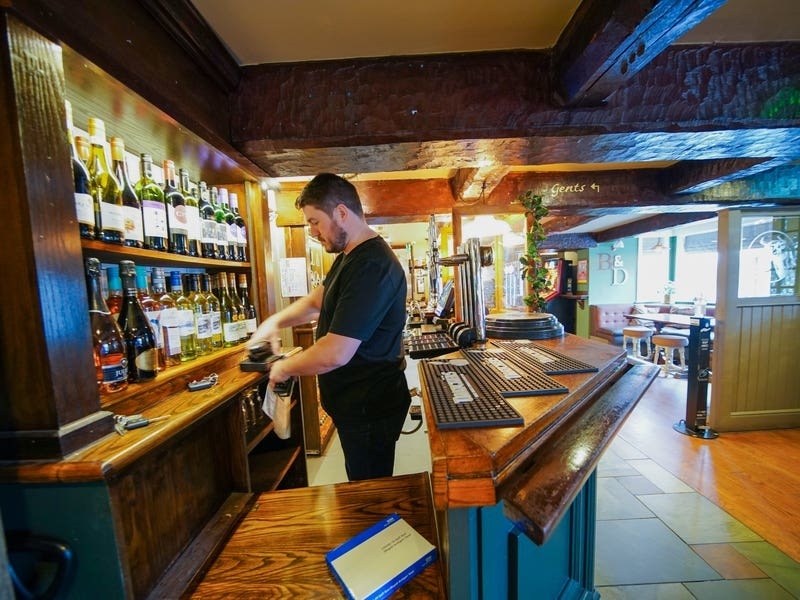The RNLI said that ten swimmers had to be physically rescued by personnel based at the El Tico lifeguard tower, 11 by those stationed at Le Braye, one at Grève de Lecq and one at Plémont. Other swimmers were helped through non-physical means.
They also helped seven people who had been cut off by the tide and seven people who were overcome by windy conditions.
The rescues followed a delayed start for the service due to the Covid-19 pandemic, with lifeguards not returning to north-coast beaches until mid-June.
Last July, lifeguards issued a plea to the public after shifting sandbanks in St Ouen’s Bay led to some of the most dangerous swimming conditions for several years.
The warning followed a mass rescue involving off-duty lifeguards and surfers, who sprang into action to save 15 people from drowning in a rip current near the Watersplash, amid large breaking waves.
Nathan Elms, lifeguard supervisor, is now reminding Islanders what to do if they become caught in a rip.
‘If you find yourself caught in a rip current, adhere to the following safety advice – swim parallel to the shore until free of the rip and then head for shore. Do not try to swim against the rip current or you will get exhausted. Always raise your hand and shout for help,’ he said.
‘We always recommend people visit a lifeguarded beach and in Jersey we are on patrol from 10am until 6pm daily at St Ouen’s Bay, St Brelade’s Bay, Plémont, Le Braye and Grève de Lecq.’
Before implementing a service at all of the patrolled beaches, staff had to undergo intensive training aimed at minimising their physical contact with swimmers and beach-goers.
Mr Elms explained how procedures, protocols and rescue methods had changed for his team. ‘During a rescue, the lifeguards will attempt to limit contact with the casualty, particularly face-to-face contact,’ he said.
‘This can be achieved by using the rescue water craft [jet ski] for the majority of water rescues. Our lifeguards can perform a no-contact rescue whereby the casualty holds on to the back of the sledge [a float attached to the back of a jet ski] and is safely returned to shore.
‘Undoubtedly, some rescues require an immediate, often closer-to-shore rescue, and the RWC may not be as practical.
‘Our lifeguards can still opt to use a rescue board and approach the casualty with social distancing in mind, requesting the casualty to hold onto the back of the rescue board, rather than traditionally laying on it.’
He added: ‘For major first aids, RNLI lifeguards must wear full PPE – gloves, face mask, face shield and an apron – when in close contact with a casualty.’
Other procedures include minimising the number of lifeguards involved in an incident, keeping two metres from beachgoers and regular thorough cleaning of lifeguard stations.






